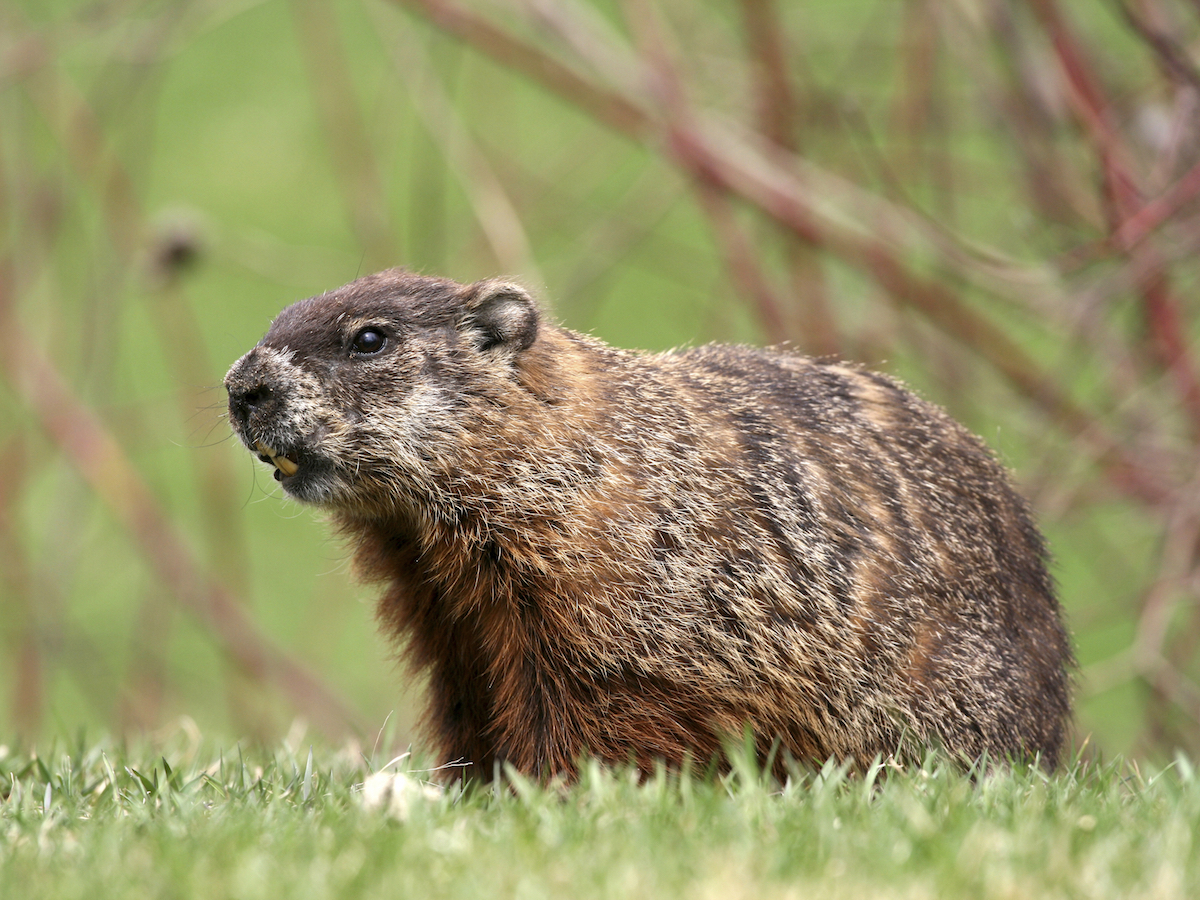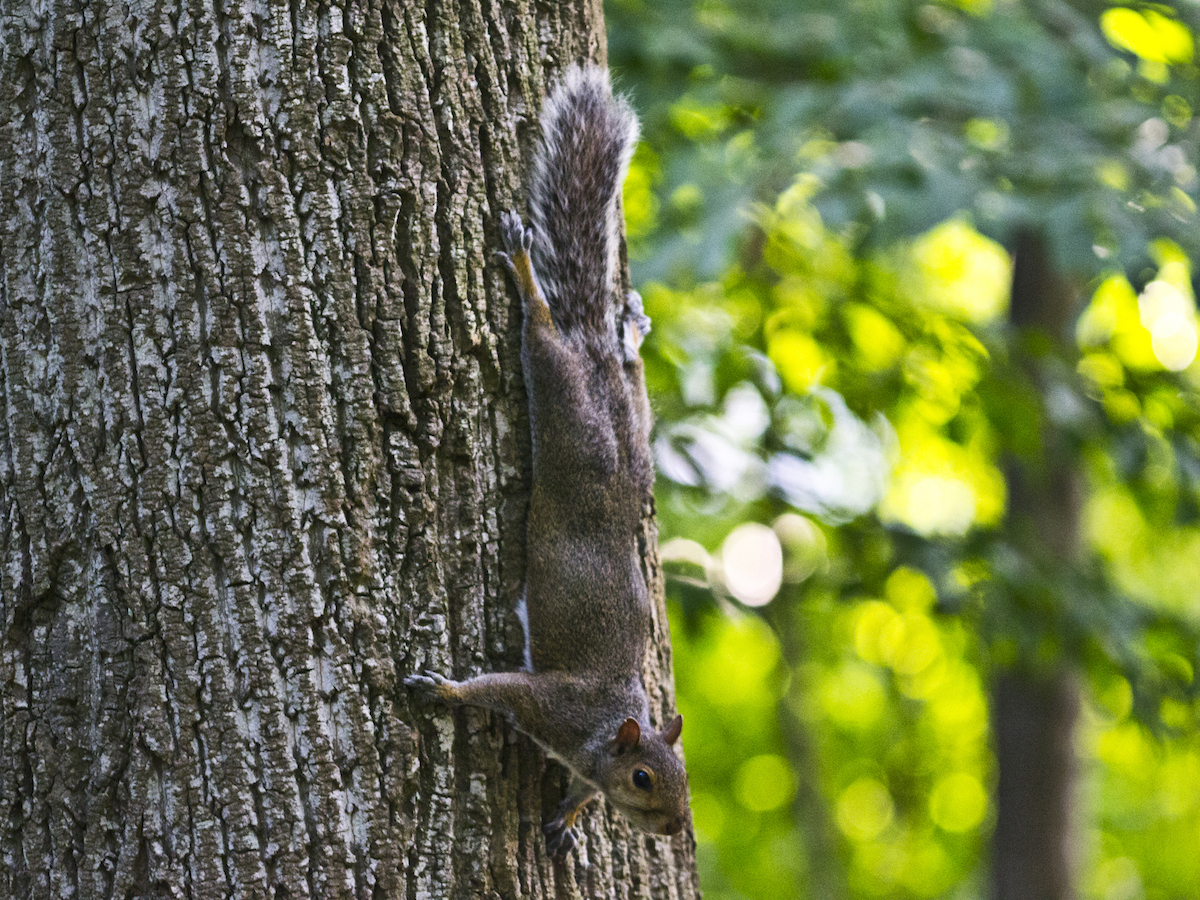Groundhogs Marmota monax

Groundhog Identification
Color: Generally grizzled, brownish gray
Size: The head and body averages 16” to 20” (40 cm to 51 cm). The tail is usually 4” to 7” (10 cm to 18 cm) long.
Legs: 4
Antennae: No
Shape: Compact, chunky bodies covered in fur with a short tail; forefeet have long, curved claws for digging burrows
Region: Northeastern and central United States
What are Groundhogs?
Groundhogs are also referred to as woodchucks or whistle pigs. They are a member of the squirrel family. There are six species of woodchucks and marmots that occur in the United States. These animals commonly invade cropland and vegetable gardens, eating or destroying vegetables and landscape plants. Although groundhogs are slow runners, they scurry quickly to their dens when they sense danger. The primary predators of groundhogs are hawks, foxes, coyotes, bobcats, dogs and humans. However, motorized vehicles kill many groundhogs each year. Keep reading for more groundhog/woodchuck facts, and to learn how to get rid of groundhogs.
What Do Groundhogs Look Like?
Adult groundhogs range anywhere from 16 to 22 inches in length and weigh anywhere between five and 13 pounds. Their bodies are compact and chunky, and covered in brownish gray fur with a short tail. Groundhogs have four legs and their front feet also have long, curved claws for digging burrows.
There is no difference between a groundhog and a woodchuck. In fact, the terms woodchuck and groundhog are interchangeable.
Groundhogs are known to burrow in fields and pastures, along fences and roadsides, and near building foundations or the bases of trees, leaving mounds of soil at the dig site. Groundhogs are primarily active during daylight hours, usually feeding in the early morning. They are strict herbivores and eat a variety of vegetables including soybeans, beans, peas, carrot tops, alfalfa and grasses. When not feeding, they are known to sunbathe during the warmest periods of the day.
Groundhogs are among the few mammals that enter into true hibernation, which generally starts in late fall near the end of October and continues until late February. Every year on February 2, people around the country celebrate Groundhog Day, a tradition that centers around the idea of a groundhog emerging from its hibernation to "predict" the weather. If the groundhog sees its shadow and returns to its burrow, there will be six more weeks of winter. But, if the animal does not see its shadow, then spring is right around the corner. The Groundhog Day ceremony featuring Punxsutawney Phil in Pennsylvania is the most popular.
The most commonly-known woodchuck species, the Marmota monax or groundhog, mainly lives in the eastern part of North America but also extends into the Northwest. The other five species, however, are all located in the West, and have the common name “marmot.” Groundhogs are generally found in open and closed forests and bushy areas. In agricultural areas, they live along creeks, pastures and wooded areas where they can create extensive burrow systems.
Groundhogs are considered a nuisance pest because they can cause extensive damage to home gardens, farms, orchards and field crops as a result of their feeding and burrowing habits. When burrowing, they have been known to destroy building foundations, create unwanted holes on lawns and cause electrical outages from gnawing on underground wires.
Groundhogs rarely come in contact with humans and therefore pose no major public health hazards. However, they are capable of carrying fleas, ticks and rabies.
Groundhogs sometimes den in crawlspaces, so it is important to inspect the outside of your home for access points, such as broken vent covers or holes in the foundation. Homeowners should seal all cracks and crevices with caulk, repair any loose siding and install a mesh cover over chimneys and other exposed openings.
Groundhogs sometimes den in crawlspaces, so it is important to inspect the outside of the home for access points, such as broken vent covers or holes in the foundation. Homeowners should seal all cracks and crevices with caulk, repair any loose siding and install a mesh cover over chimneys and other exposed openings.
If an infestation is suspected, contact a licensed pest control professional to recommend the best method to get rid of a groundhog.
If you suspect an Argentine ant infestation in your home, the best course of action is to contact a licensed pest control professional. You can find one with the helpful zip code search below.




